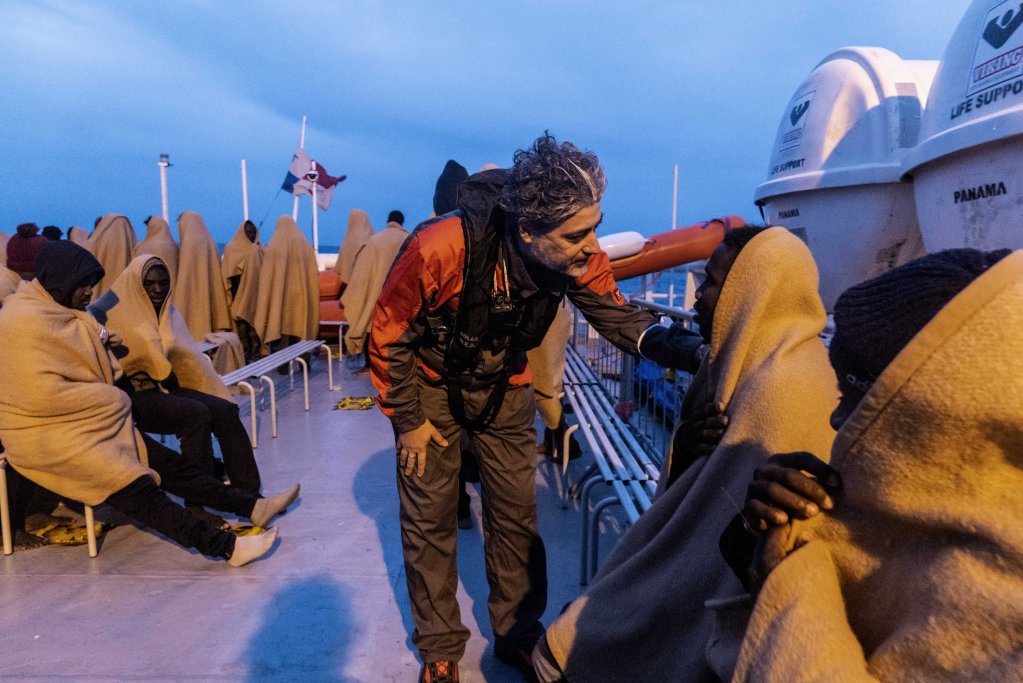The number of unaccompanied minors seeking international protection reached a record high in 2022. Guardians provide support and guidance to unaccompanied minors who either made the journey on their own or were separated from their families along the way.
In 2022, almost 40,000 unaccompanied minors applied for international protection across the different European Union (EU) member states.
It was the highest number of unaccompanied minors since the onset of the uptick in migration movements to Europe in 2015 and is almost double the number from the previous year. The Taliban takeover of Afghanistan in August 2021 and the Russian invasion of Ukraine in February of the following year contributed to the consistent increase in the number of unaccompanied minors.
Some minors are unaccompanied because they made the journey to Europe on their own, others because they were separated from their family. Either way, they need a representative who can take parental responsibility, make important decisions in their best interest, help arrange all their basic needs, and assist them in the asylum procedure.
Also read: 'Thousands of kilometers alone': Unaccompanied child migrants arriving in Europe
Support of a guardian
Professional guardianship is not a standard in the EU. Unlike professional child protection authorities, guardians are often volunteers who may be affiliated with international NGOs or organized groups like the European Guardianship Network.
The European Union Agency for Asylum (EUAA) and the European Agency for Fundamental Human Rights (FRA) released two new practical handbooks to help guardians build trust, advise, and assist unaccompanied migrant children so that they can benefit from the rights and protections guaranteed under EU law.
In addition, the EUAA and the FRA also released a guidebook for guardians working with children fleeing Ukraine, who have specific rights and privileges under the Temporary Protection Directive.
Here's an overview of the information contained in these handbooks:
The Practical Tool for Guardians – Introduction to International Protection
Who is it for? Newly appointed guardians who are in charge of minors who are in need of international protection which is defined as the way states protect third-country nationals when they are at risk of persecution or serious harm in their country of nationality or habitual residence (if stateless)
What information is in it?
- Concept, definition, and different forms of international protection
- Possible forms of protection recognized through the asylum procedure
- The relevant legal framework that governs international protection for children
- Rights of the child in the process of applying for international protection
What can I learn about guardianship?
- Duties and responsibilities as a guardian to support the child
- How to ensure the best interest of the child during the legal process
- How to facilitate the participation of the child
The Practical Tool for Guardians – The Asylum Procedure
Who is it for? Guardians who need guidance on their daily tasks and responsibilities throughout the asylum procedure.
What information is in it?
- Overview of the asylum procedure including the safeguards for fair and effective asylum procedure when it comes to children
- Example: Right to dignified living during the asylum procedure with respect to reception conditions and immigration detention
What can I learn about guardianship?
- Your role as a guardian throughout the different phases of the asylum process
- Guarantees for children
- What to do if something unexpected happens, for example: what to do if the age is disputed
The Practical Tool for Guardians: Temporary Protection for Unaccompanied Children Fleeing Ukraine
Who is it for? Guardians appointed by Member States to support displaced children from Ukraine
What information is in it?
- What is temporary protection? How does it work and how it is related to other procedures?
- Who are the children fleeing Ukraine?
- What are the rights of child beneficiaries of temporary protection for
- All children
- Unaccompanied children
- Children accompanied by guardians formerly appointed by Ukranian authorities
What can I learn about guardianship?
- Evaluation of potential pathways
- Basic elements of best interest assessment
- Workflow of guardian’s role in the temporary protection process
Also read: Germany: Number of unaccompanied refugee minors more than doubles

Unaccompanied minors: who are they?
According to a report by the youth-led nonprofit Euro-Mediterranean Human Rights Monitor (Euro-Med Monitor), last year the highest percentage of unaccompanied minor asylum applications were filed in Bulgaria (17%), followed by Austria, Belgium, and the Netherlands (12%), and Hungary (11%).
Unaccompanied minors are usually male, between the ages of 16-17. Females comprise about 7%, although they were slightly more prevalent among female children from Somalia.
The Euro-Med Monitor revealed that there are significant disparities in the treatment of unaccompanied minors compared to those who are accompanied. There is a prevalent lack of safeguards, detention, and inadequate services for unaccompanied minors across several countries in Europe.
More practical information and research
- A detailed practical handbook on the functions of guardians of unaccompanied children, available in all EU languages
- An online course about guardianship
- “Happiness, Love, and Understanding: The Protection of Unaccompanied Minors in the 27 EU Member States” highlights the disparities between accompanied and unaccompanied minors and the urgent need of unaccompanied minors for timely identification, legal guardianship, and proper accommodation
- Guardianship Systems for Unaccompanied Children in the EU: Developments since 2014 covers legal and policy developments on guardianship, knowledge and skills of guardians, and available training and support
